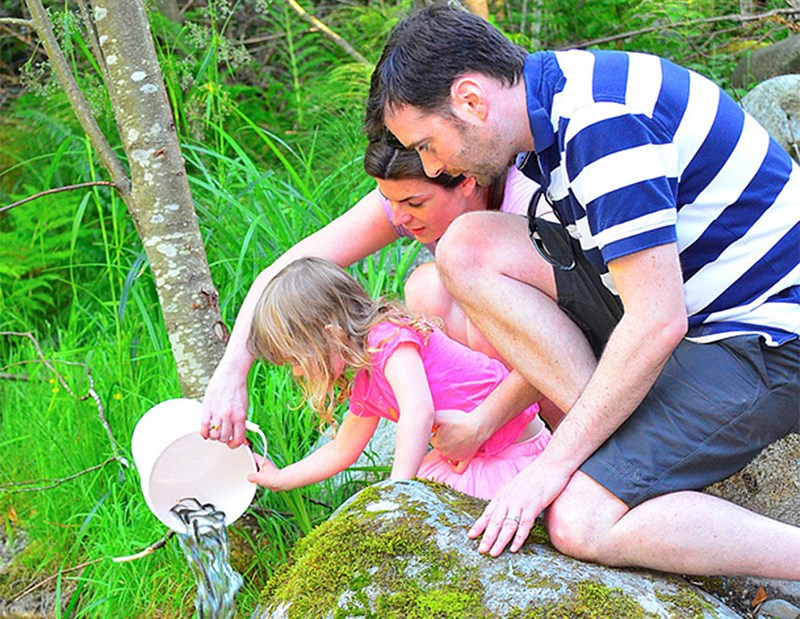As part of our SOS/Saving Our Salmon Series, The Tri-City News asked local streamkeeper groups and their supporters what they would like to see people do to ensure the continued health of Pacific salmon. This is what they said.
EYES AND EARS
• The one thing people can do to ensure the existence of wild Pacific salmon is to treat their streams like diamonds and protect and cherish them because without this habitat, no salmon.
— Sandy Budd, president of the Maple Creek Streamkeepers Society
• Keep dogs or rubbish from their local streams, volunteer at a local hatchery or stewardship group, or fight against open-pen fish farms by only buying wild salmon — that will do it.
— Brian Wormald, president of the Port Moody Ecological Society
• Get to know your watershed. Salmon and their habitat can’t protect themselves — we need to care and advocate for both. Visit a stream, talk to your local stewardship group, and view the fish and habitat. Understand the issues. Monitor and report suspicious activity.
— Hoy-Scott Watershed Society
VOLUNTEER
• All of us, to some extent or another, are aware of the rapidly changing global situation. Locally, the miracle of salmon spawning in the Tri-Cities’ creeks really brings it home to us that there is hope and optimism for the coexistence of nature with civilization. We all have global thoughts and feel somewhat powerless as individuals. It is only when we act locally, literally in our own backyards that we can make a difference. It changes the community in which we live. It really gets better and an individual can make a difference. So volunteer at organizations like your local hatchery, nature centre, outdoor club, bird sanctuary, botanical society, Bad Seed workshop, wildlife refuge, ocean stewardship group or beach clean-up.
— Rod MacVicar, founder, Mossom Creek hatchery
ACTIONS
• Avoid discharging water containing cleaning agents, water-treatment products or other contaminants from household exterior cleaning or swimming pools directly into storm sewers or drainage ditches, which sooner or later flow into salmon-spawning and -rearing areas. Use biodegradable products and sanitary sewer disposal systems to minimize possibilities for damaging young salmon.
— Norm Fletcher, Grist Goeson Memorial Hatchery coordinator
• People should understand how urban stormwater runoff impacts local salmon-bearing streams and how you can adopt sustainable rainwater management practices. As a homeowner, you can make simple changes to the landscape on your property to improve salmon health. For example, you can learn to identify and remove invasive species such as English Ivy and Himalayan Blackberry to help your local salmon population.
— Melissa Dick, coordinator of the Coquitlam River Watershed Society
• Take action by asking for or purchasing wild salmon or land-raised salmon; supporting MP Fin Donnelly’s Bill C-228, which transitions West Coast salmon farms to safe closed containment; and take the watershed pledge (bit.ly/watershedpledge).
— Melissa Chaun, Rivershed Society of BC
• Vote for a political party or person or support a group pressuring politicians to protect wild salmon habitat. Encourage municipal governments to make land decisions for wider stream setbacks, provincial governments to make regulations for industry to have clean water in streams and support federal governments that allocate funding and make guidelines for Department of Fisheries to protect the health of salmon. Other things you can do: Don't put anything down the storm drains on the streets that could be harmful to fish, such as soap, oil, or antifreeze, have drought tolerant native plant gardens and don't put chemicals or fertilizers on lawns or gardens; stop using products with microbeads; don't buy or eat open-pen farmed salmon; keep people and animals out of the streams and rivers except for the fisheries window Aug. 1 to Sept. 15 when there are fewer fish in the water.
— Ian McArthur, Coquitlam Riverwatch
• If I could ask people to do one thing for wild salmon, it would be to get involved and lend their voice to this issue. Pacific B.C. Salmon are a crucial part of our coastal communities, our environment and our economy. Without them we lose everything — so speak up!
— Tracy Green, president of the Burrard Inlet Marine Enhancement Society
EDUCATE
• Education is the most important factor. Witness the miracle of our salmon. Spend a little time walking our trails and see first hand how fortunate we are to live in an amazing urban setting. Observe the salmon spawning in the fall. Curiosity about the salmon growing in our creeks will begin. Respect, education and conservation will follow. Sharing our awareness will ensure the future of salmon in B.C.
— Hyde Creek Watershed Society
• Children who lose contact with nature won’t defend it. Let’s balance their screen time with stream time. Every child should know their "stream address" as well as their street address. Repeated nature explorations and stewardship activities help them develop a sense of place. Caring about salmon and all else that is wild will follow. This is an educational imperative.
— Ruth Foster, Mossom Creek hatchery founder



